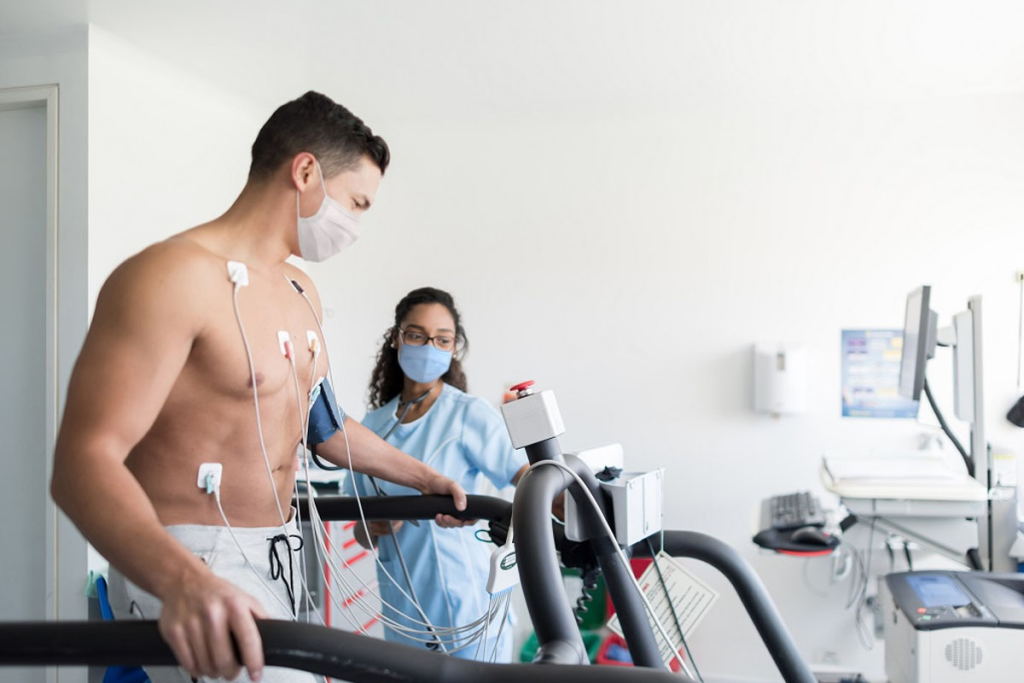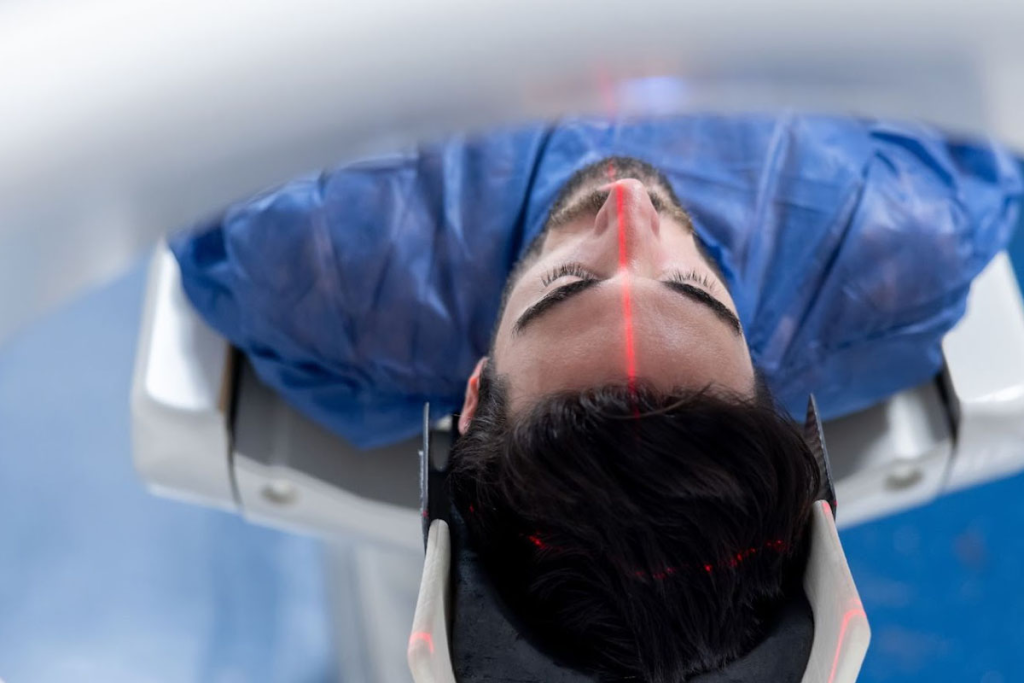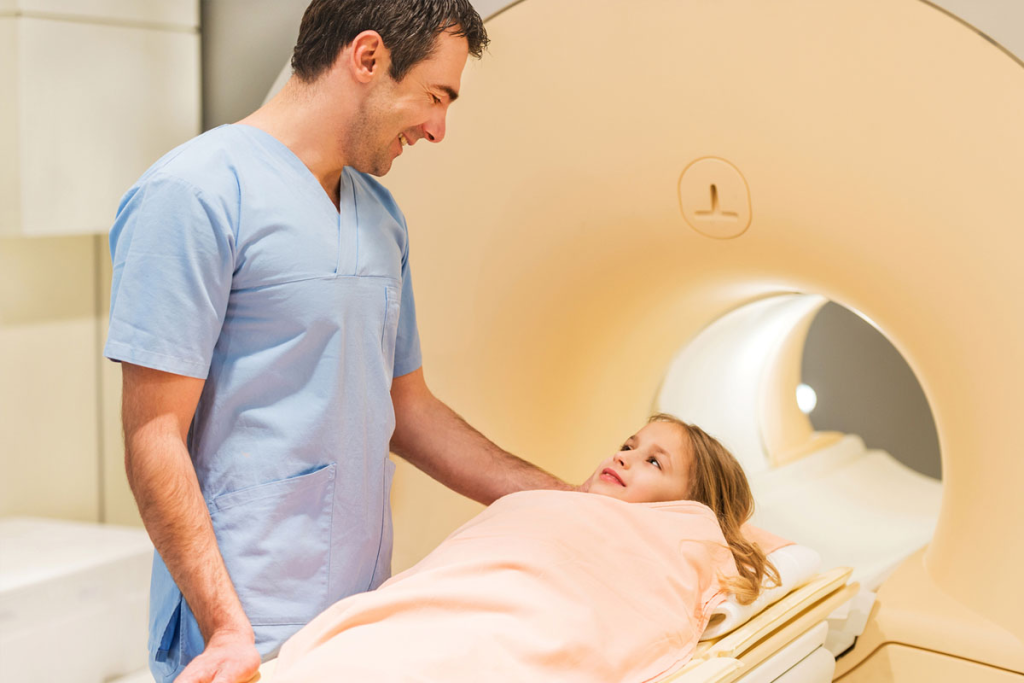
Nearly 1 million PET scans are done every year in the U.S. to check heart health and find various medical issues. After a PET scan, patients often wonder what comes next. We’re here to help guide you through this.
A PET scan gives important insights into your cardiac evaluation. If the results show something, your doctor might suggest more tests. For example, a nuclear cardiac stress test to look at your heart’s function and blood flow.

PET scans are key in checking the heart’s health. They are a detailed test that shows how well the heart works and if there are any problems.
PET scans use a tiny amount of radioactive tracer. This tracer goes into the blood and sticks to parts of the heart that are active. The PET scanner picks up these signals to make clear pictures of the heart.
The process involves several steps:
PET scans are different from other heart tests like echocardiograms or MRI scans. While other tests show the heart’s shape, PET scans look at how active the heart is.
| Imaging Test | Primary Use | Key Benefits |
| PET Scan | Assessing cardiac metabolism and viability | Provides metabolic information, high sensitivity for detecting cardiac issues |
| Echocardiogram | Evaluating heart structure and function | Non-invasive, real-time imaging, assesses heart valves and chambers |
| CT Scan | Visualizing coronary arteries and cardiac structure | High-resolution images, quick procedure |
| MRI Scan | Detailed imaging of heart structure and function | No radiation, excellent soft tissue differentiation |
PET scans are great for finding heart problems like coronary artery disease. They also check if the heart can recover after a heart attack. They can spot other issues like cardiac sarcoidosis or inflammation too.
Some of the key cardiac issues that PET scans can detect include:
“PET scans have revolutionized the field of cardiology by providing a window into the heart’s metabolic activity, enabling clinicians to diagnose and manage cardiac conditions more effectively.”
Knowing how PET scans work and what they find helps patients understand their heart health better.
The time after a PET scan is key for patient safety and test accuracy. We’ll walk you through the steps of post-PET scan care.
We watch patients closely right after the PET scan for any quick reactions. This recovery period is usually short. Most can go back to their usual activities soon after. But, we tell patients to drink lots of water to get rid of the radioactive tracer.
“Hydration is key after a PET scan,” says a top cardiologist. “Drinking lots of water cuts down on radiation exposure.”
We take radiation safety seriously, even with small amounts in PET scans. We tell patients to stay away from pregnant women and kids for a bit after the scan.
Even though PET scans are mostly safe, some might feel dizzy or nauseous right away. We keep a close eye on these side effects during the recovery. If they last, patients should reach out to their healthcare provider.
By sticking to these post-PET scan steps, we make sure our patients are safe and comfortable. We also make sure the test results are reliable. Our team is dedicated to giving you the best care every step of the way.

Getting PET scan results is a key step in understanding heart health. It helps plan the next steps. Waiting for these results can be a time of high anticipation for many.
The time to get PET scan results varies. It depends on the facility’s workload and the scan’s complexity. Patients usually wait a few hours to a couple of days. Sometimes, results are ready in 24 hours, if the scan is quickly analyzed by a specialist.
A trained nuclear medicine specialist or a cardiologist with heart imaging skills interprets PET scan results. They look for any heart disease signs and provide a detailed report.
After the results are analyzed, they are shared with the patient. This is usually done by the primary care doctor or cardiologist. Communication methods vary. Some patients get their results in a face-to-face consultation, while others are called or informed online. The choice depends on the patient’s preference and the results’ nature.
Here are some key points to consider regarding the communication of PET scan results:
Knowing the timeline and process for PET scan results can ease uncertainty. It helps patients prepare for their cardiac care journey by understanding who interprets their results and what to expect next.
PET scan results give you insights into your heart’s health. They help you and your doctor make informed decisions. After a PET scan, it’s important to understand the results to plan your cardiac care.
When your PET scan results are analyzed, they are usually normal or abnormal. Normal findings mean your heart’s blood flow and function are okay during rest and stress. On the other hand, abnormal findings might show reduced blood flow to heart areas. This could mean coronary artery disease or other heart issues.
Abnormal findings don’t always mean a severe condition. But, they do show you need more evaluation or monitoring.
PET scan images are complex and need special knowledge to understand. The images show different colors for heart activity and blood flow. Bright or hot spots mean high activity or good blood flow. Darker or cold spots show reduced activity or blood flow.
Your healthcare provider will look at these images with your health, medical history, and symptoms. This helps them understand your cardiac health fully.
The meaning of your PET scan results can change a lot. Normal results might mean your heart is healthy, and you might not need more tests right away. But, abnormal results could mean heart issues like coronary artery disease. Your doctor might suggest more tests or treatments then.
Understanding your PET scan results is key to managing your heart health. By working with your healthcare provider, you can create a plan to address any heart concerns and improve your health.
After getting your PET scan results, it’s key to talk them over with your doctor. This helps you understand how they affect your heart health. Follow-up consultations are important for addressing any concerns and planning your next steps.
Your primary doctor is key in managing your care. They’ll go over your PET scan results with you. This is a chance to ask questions and learn about your treatment plan.
If your PET scan shows heart issues, your doctor might send you to a cardiologist. Cardiologists focus on heart problems and can guide you on managing your heart health. We’ll help ensure a smooth transition to your specialist.
Preparing a list of questions for your follow-up is helpful. Ask about your PET scan results, the accuracy of cardiac stress tests, and any lifestyle changes or treatments you might need. Here are some questions to consider:
Having questions ready ensures a productive conversation with your healthcare provider.
To better understand follow-up consultations, let’s look at possible next steps based on PET scan results.
| PET Scan Result | Typical Next Steps | Specialist Referral |
| Normal | Routine monitoring, lifestyle advice | Unlikely |
| Abnormal | Further diagnostic testing, treatment planning | Likely to a cardiologist |
| Inconclusive | Additional testing or a repeat PET scan | Possible |
This table shows the different paths based on your PET scan results. Knowing these possibilities helps you prepare for your follow-up consultation.
Getting normal PET scan results is a big relief. But, it doesn’t mean your heart health check is over. We’ll help you understand what comes next, like regular checks and how to stay healthy.
Even with normal PET scan results, we might suggest regular checks. This helps us keep an eye on your heart health. You’ll see your doctor regularly to check on your overall health.
Regular check-ups are key. They help us spot any problems early. Your doctor will look at your medical history, do physical exams, and might order more tests if needed.
Staying healthy is important for your heart. We suggest a heart-healthy lifestyle. This means eating right, exercising, not smoking, and managing stress.
More tests might be needed if your health changes, you have new symptoms, or as part of ongoing checks. We’ll decide together when you should have more tests. This will depend on your risk factors and health.
Talking about the risks of nuclear cardiac stress tests is also important. This includes radiation and side effects. We’ll make sure the test is right for you, considering the risks and benefits.
If your PET scan shows something abnormal, our team is here to help. We’ll guide you through what comes next. An abnormal result doesn’t always mean a serious problem. But it does mean you need more tests to check your heart health.
After an abnormal PET scan, your doctor might suggest more tests. These tests help understand your heart better. They might include:
The time needed for more tests varies. It depends on how bad your PET scan results are and your health. Sometimes, tests are urgent. Other times, they can wait. Your doctor will talk to you about when and why.
To get ready for more tests, you might need to:
Getting abnormal PET scan results is a big step towards knowing and managing your heart health. With the right care and support, you can face this journey with confidence.
PET scan results are key in planning treatment for heart patients. They give us detailed images of heart issues. This helps us create a good treatment plan.
PET scan findings help us choose the right treatment. We see where blood flow is low and if the heart muscle is working well. We also spot blockages or other problems.
This info helps us decide if patients need procedures like angioplasty or CABG. Or if they should just take medicine.
Nuclear stress test benefits include checking how well the heart works. PET scans give clear images of the heart. This makes stress tests more accurate.
We make a care plan just for each patient based on their PET scan. We look at their health, medical history, and lifestyle. This plan might include changes to their lifestyle, medicine, or surgery.
Knowing how accurate cardiac stress testing is helps us make a plan that fits each patient. Our goal is to fix current heart problems and prevent new ones.
Treating heart conditions needs a team effort. Our team includes cardiologists, radiologists, and others. We all work together to plan treatment based on PET scan results.
This team approach makes sure we cover all aspects of care. It leads to better and more complete treatment.
The cardiac care plan changes as the patient does. By working together, we aim for the best results for our patients.
Nuclear cardiac stress tests are important for heart health but come with risks. It’s key to know the risks and how to stay safe.
Most people do well with these tests. But, some might feel:
These effects are usually mild and go away quickly. But, if symptoms are bad or last long, tell your doctor right away.
The big worry is ionizing radiation from these tests. The dose is low, but there’s debate on long-term risks. The main worry is cancer risk over time.
The radiation dose is like a few years of natural background radiation. But, talk to your doctor about your personal risks.
Some people should be careful or avoid these tests. This includes:
Tell your doctor about your health history and any worries you have.
In summary, nuclear cardiac stress tests have risks, but knowing them helps. Talking to a doctor can help manage these risks. For most, the benefits of these tests are worth it.
Understanding insurance for post-PET scan procedures is key for planning your finances. Knowing what’s covered helps you manage costs and make smart choices about your health.
For those with Medicare, nuclear stress tests like PET scans are usually covered if they’re needed. Medicare Part B pays for diagnostic tests, including nuclear medicine. But, coverage can vary based on your test’s specifics and your Medicare plan.
Key aspects of Medicare coverage to consider:
Private insurance plans differ in what they cover after a PET scan. Some may pay for extra tests or treatments, while others might need pre-approval or have limits.
To ensure smooth coverage, patients should:
Even with insurance, you might face extra costs for post-PET scan care. Knowing these costs helps with financial planning.
Strategies for managing out-of-pocket expenses include:
By understanding your insurance and possible extra costs, you can handle the financial side of your healthcare after a PET scan better.
Not everyone needs a nuclear stress test. Luckily, there are other ways to check the heart’s health. These options give detailed views of the heart, each with its own benefits and things to think about.
There are non-nuclear stress tests like the exercise stress test and stress echocardiography. These tests check how the heart works when it’s stressed, without using radioactive materials.
An exercise stress test looks at heart rate, blood pressure, and ECG while you exercise, usually on a treadmill. It’s easy to get and gives quick results.
Other ways to see the heart include cardiac magnetic resonance imaging (MRI) and coronary computed tomography angiography (CTA). These methods give detailed pictures of the heart’s shape and how it works. They help find many heart problems.
Cardiac MRI is great for looking at heart tissue and finding scars or inflammation. CTA is best for seeing the coronary arteries and finding blockages.
Doctors suggest alternative tests based on what each patient needs. This includes certain health conditions, pregnancy, or worries about radiation. For example, pregnant women or those with severe kidney disease might do better with tests like cardiac MRI.
We look at many things, like your medical history and current health, to pick the best test for you.
Knowing what to do after a PET scan is key for patients getting a cardiac check-up. We’ve looked at how nuclear cardiac stress tests and PET scan results help in diagnosis. This gives us a better understanding of the diagnostic path.
Patients can now better manage their heart care and make smart choices about their health. Cardiac imaging is a big part of this. It helps doctors create plans that fit each patient’s needs.
The findings from a PET scan can change what tests and treatments come next. It’s important for patients to work with their doctors closely. This ensures they get the best care possible.
In short, knowing about PET scans and nuclear cardiac stress tests helps patients take charge of their heart health. This knowledge is powerful in managing their cardiac care.
A nuclear cardiac stress test checks how well the heart works under stress. It’s often done after a PET scan shows heart problems. It helps find heart disease, check heart function, and see if treatments work.
Most people can have a nuclear cardiac stress test right after a PET scan. This is because the PET scan recovery time is very short. But the exact timing can vary based on your health and what your doctor says.
Nuclear cardiac stress tests can have risks like feeling dizzy or having chest pain. They also involve some radiation, which can be a concern over time. Some people, like those with certain health issues or pregnant women, should talk to their doctor about these risks.
Doctors look at PET scan images to see if everything looks normal or not. If there are problems, like heart disease, they might suggest more tests. A nuclear cardiac stress test can help check how well the heart is working.
There are other tests like non-nuclear stress tests and imaging like echocardiograms or MRI. Doctors choose these based on what’s best for each patient. It depends on their health history and what the doctor thinks is best.
Medicare usually covers nuclear cardiac stress tests if they’re needed. But private insurance can vary. It’s a good idea to check with your insurance to know what you’ll pay out of pocket.
PET scan results are very important for treatment plans. They give detailed information about the heart’s function and any problems. This helps doctors create personalized care plans, which might include medicine, lifestyle changes, or more tests.
At follow-up visits, ask about your PET scan results and what they mean. Find out if more tests are needed, like a nuclear cardiac stress test. Also, ask about treatment options and any lifestyle changes or preventive steps you should take.
How often you need a stress test depends on your health, risk factors, and medical history. Your doctor will tell you how often based on these factors and your previous test results.
While rare, nuclear stress tests can cause heart attacks in some people. It’s important to talk to your doctor about your risks and any concerns before the test.
A nuclear stress test uses a radioactive tracer to see how the heart works under stress. A regular stress test checks heart activity without radioactive materials. The choice depends on what’s needed for your diagnosis and condition.
Subscribe to our e-newsletter to stay informed about the latest innovations in the world of health and exclusive offers!
WhatsApp us